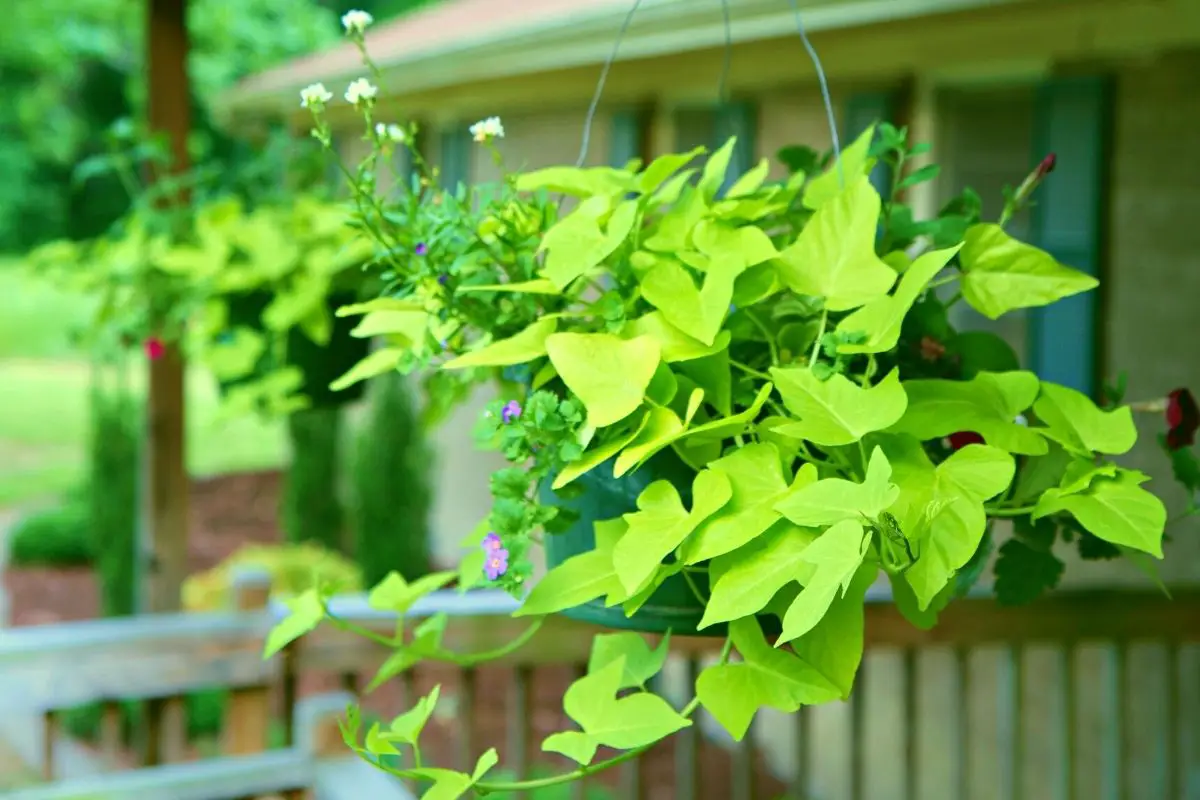Growing a Sweet Potato Vine Indoors – 3 Steps for Success
Have you ever considered using your veggies as decor? Well, maybe it’s time to try!
Sweet potato vines are an underdog of decorative indoor plants. Though they are often used as accent plants, sometimes they deserve the spotlight too! The vines make a great addition to homes, offices or any other space that needs a bit of life and color. And the best part is – you can grow them yourself! Another bonus is they are a super fast growing vine!
Sweet potato vines can easily be grown indoors – no garden necessary. All it takes is some nurturing love and care.
How Can You Grow a Sweet Potato Vine Indoors?
Sweet potato vines are most often grown using an existing plant or sweet potato. Though you can use seeds, it’s not the best option if you want a healthy, glowing plant pet. Luckily, growing these vines only takes a couple of steps.
You will need:
- A sweet potato
- A cup large enough to fit said sweet potato
- Lukewarm water
How to Plant Your Sweet Potato Vine

- Fill up your chosen cup with enough water for the bottom of the sweet potato to be submerged.
- Place your sweet potato into the cup. Depending on the size, you may have to prop it onto the rip so the potato doesn’t touch the bottom of the cup.
- Wait for your potato to sprout its new roots!
In a few weeks, you should see the roots begin to grow. That is where your new plant will grow out!
Alternatively, if you can find an already grown sweet potato vine, you can also use a cutting of the plant to grow your own. The same steps apply – just switch out your potato for the plant cutting and you’re all set.
How Do You Take Care of Sweet Potato Vine?
After the initial planting, the next step is to nurture the newest resident of your home.
- Make sure your plant is getting enough sunlight. Sweet potato vines don’t enjoy cold and dark climates, so keeping them near a window will ensure they stay healthy and sun-kissed. Sunlight also helps the color to stay richer.
- Change the water in your vine’s container regularly. If left for too long, the water can prevent your plant from growing further or cause it to wilt.
- Provide enough space for the plant to grow. Once the roots have grown a significant amount, switch the plant into a larger container so there isn’t any overcrowding. In fact, when the roots grow enough you can transfer your plant to a pot with soil, back to its natural habitat!
- Fertilizer is your friend! A few drops of fertilizer into the water every few weeks will boost your plant’s growth. Wait to start adding fertilizer until you see the vine sprout.
Frequently Asked Questions

How long does a sweet potato vine live?
How long your sweet potato vine will survive depends on how well you maintain it. Some sources say the plant can live for 2 years!
How long does a sweet potato vine get?
A healthy, flourishing sweet potato vine can grow up to 10 feet long! And that’s not even considering that it can also spread up to 6 feet wide. But not to worry – you can keep your vine from taking over your home by simply giving it a little trim.
Can you grow sweet potato vines in a cold climate?
Sweet potato vines cannot stand the cold! While they can survive a cold front for a brief period of time, consistently cold temperatures will cause them to wilt and die. So if you’re planning on starting a family of vines, make sure you’ve got enough sun to keep the planters happy and healthy.
Can you grow sweet potatoes from a sweet potato vine?
Sweet potatoes can grow from a sweet potato vine, but only if they are planted in soil. Since potatoes can’t grow in water, if you keep your vine plant in a container with just water, you won’t see any new additions to the family. However, you can shift your plant into your garden or a larger container with soil, and in a couple of months you’ll be able to harvest some potatoes.
Can you grow sweet potatoes indoors?
Sweet potatoes are one of the easiest vegetables to grow indoors. And like your sweet potato vine, you don’t need a garden for this either. You will need an ideal environment including soil, sufficient sunlight and water. If you have all that in place, you’ll soon be harvesting your own crop!






